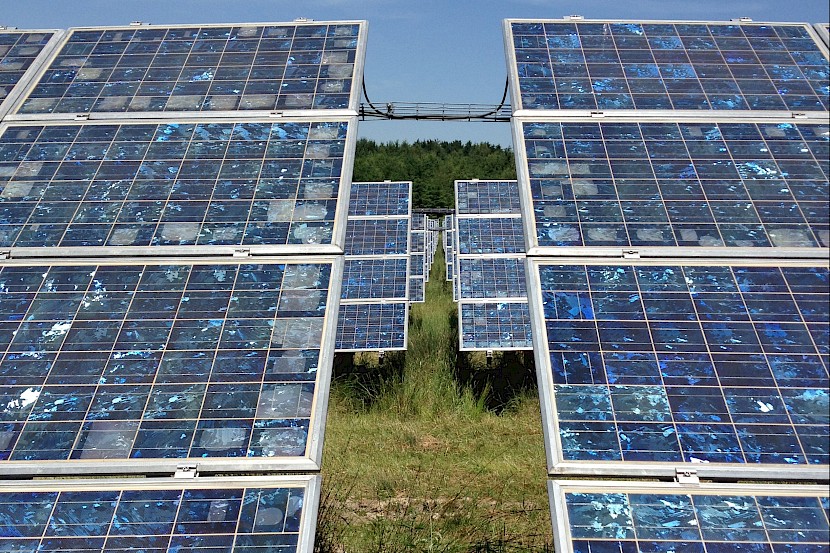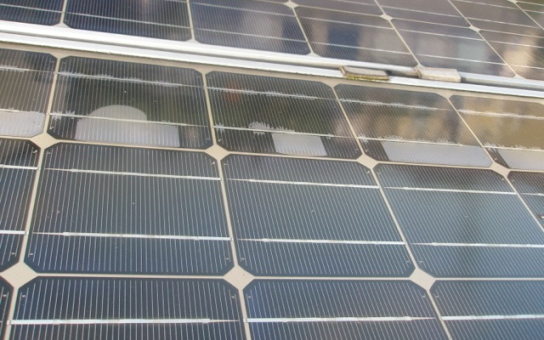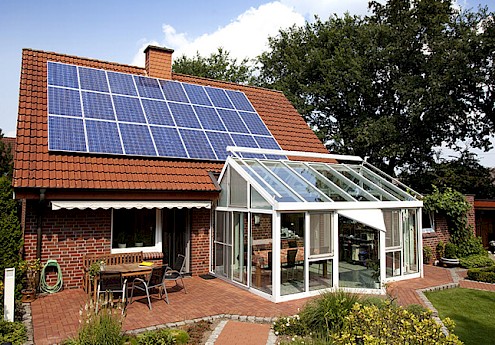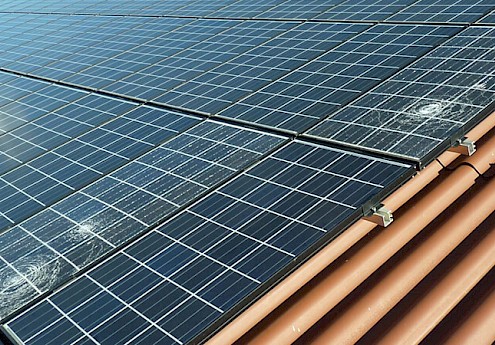
Error pattern: delamination
What delaminates on modules?
Solar modules consist of interconnected solar cells or a semiconductor layer that are laminated under pressure and heat in an encapsulating material between a front glass and a back side - either a foil or a second glass. When the adhesion between the glass, the encapsulation material, the active layers and the backing breaks down, this is called delamination.
How can delamination be recognized?
Delaminations can be seen in flat opacities under the front glass, which look like air bubbles. This turbidity usually occurs along the edges of the solar cells. However, they can also express themselves as spots that extend over large parts of the module surface. These differed significantly from other defects such as snail tracks, which also cause similar cloudiness. Because while the snail tracks are clearly defined lines, the delamination manifests itself in a flat discoloration.
What is the cause of delaminations?
Deterioration of the adhesion between the glass, the encapsulation material, the active semiconductor layers and the backside layers can have many reasons, which differ depending on the semiconductor technology used. In thin-film modules, for example, the transparent conductive oxide layer (TCO) between the cover glass and the semiconductor layer can become detached. The cause is considered to be sodium ions, which migrate from the cover glass to the TCO layer, accelerated by the external electric field. This allows them to break the connection between these two components. After that, incoming moisture can accelerate the process.
In the case of crystalline modules, the weak point at which delamination can occur is at the interfaces between solar cells and encapsulating films such as ethylene vinyl acetate (EVA) or the less commonly used polyethylene terephthalate (PET). This is because the strength of the interfaces is lower there than at the interface between the embedding film and the front glass. This can be caused by lamination errors during manufacture or material defects. However, UV radiation, temperature and/or humidity can also damage the embedding films. In the case of PET films, for example, it has been shown that these are adversely affected by the hydrolysis of the PET.
What is the risk of delamination?
The dissolving adhesion of the individual components of the modules and the subsequent corrosion after delamination can reduce the module performance. However, they are not automatically a security problem. However, if delaminations spread over large areas of a crystalline solar module, insulation faults can occur. If the rear encapsulating film separates from the solar cells, the junction box can become detached with the potential for an arc flash hazard.
How can delamination be prevented and is the error repairable?
Since delamination of crystalline solar modules is usually a manufacturing or material defect, the system operator cannot explicitly prevent or prevent it. In most cases, the delaminations cannot be repaired.
Since the delamination, the TCO corrosion, in thin-film modules is often caused by the negative external electrical field, the system operator can prevent this. Because negative currents can flow if there is a negative potential to earth at the solar system. In order to avoid this negative potential, the negative pole of the PV system – ideally in the inverter – is grounded. The resulting electrical field pulls the positively charged sodium ions in the direction of the negative pole, i.e. in the direction of the cover glass and thus away from the TCO layer. Once TCO corrosion has set in, it is usually no longer repairable. An expert can assess whether the delamination poses a risk and whether the module has to be replaced due to the loss of performance caused by the delamination. Above all, it is important to ensure that a replacement module fits the other panels in the string and in the system. You can find suitable replacement modules on the SecondSol online marketplace.



